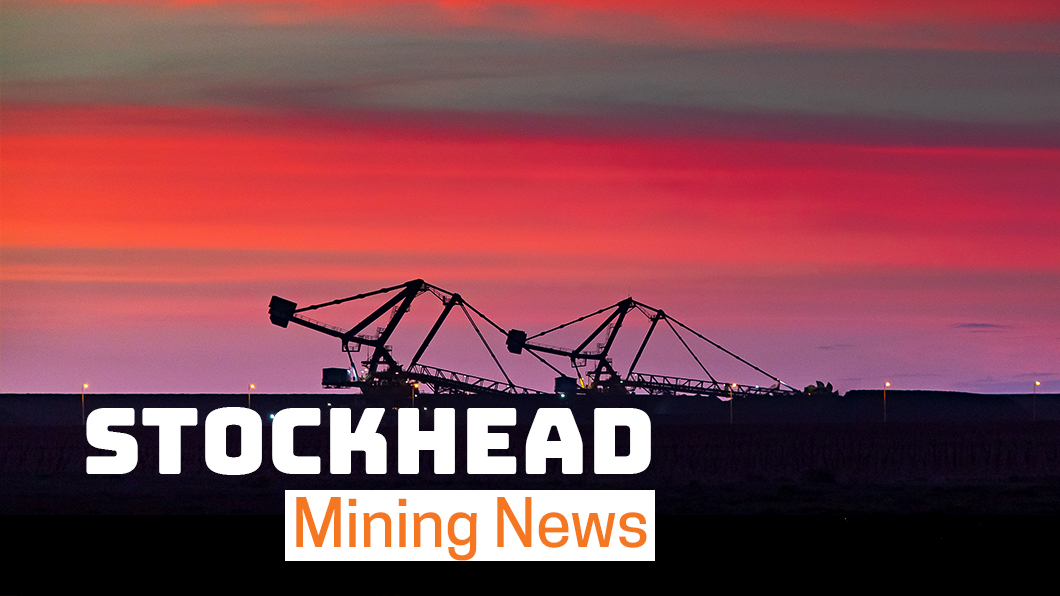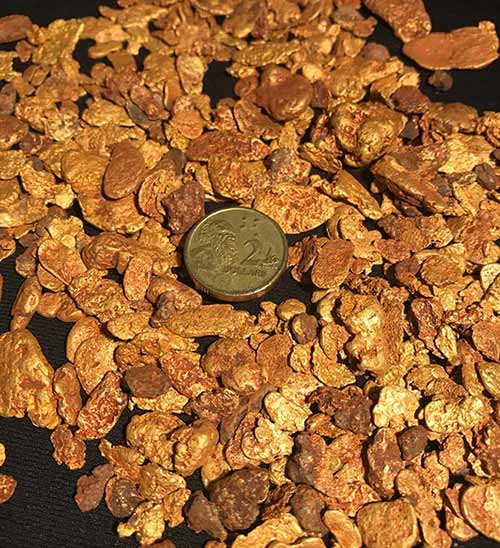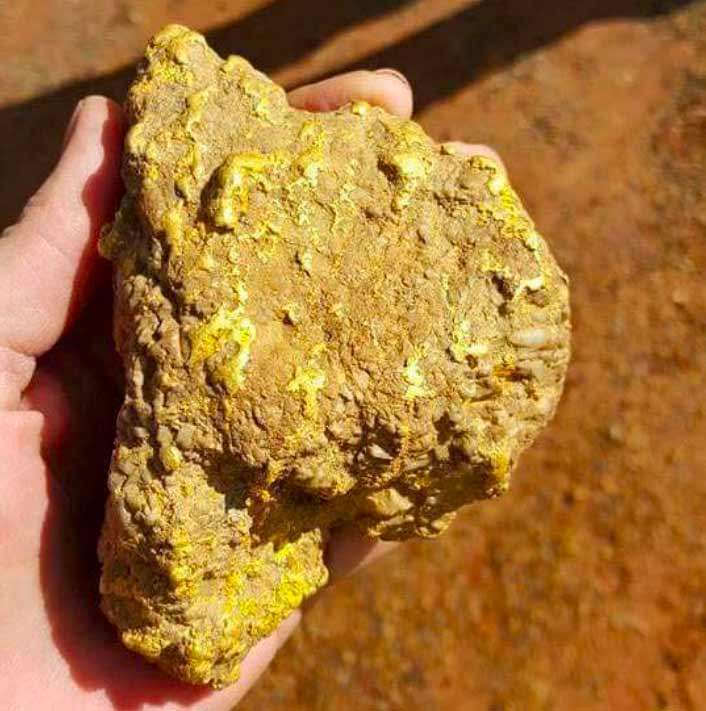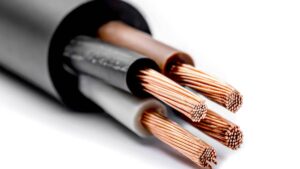Guide to the Pilbara gold nugget rush: Who’s winning and what’s next

Pic: Bloomberg Creative / Bloomberg Creative Photos via Getty Images
The gold nugget rush in the Pilbara region of north Western Australia has been a boon for ASX-listed explorers, with share prices rising up to 275 per cent over the past two weeks.
Investors have bought into a swathe of gold juniors — particularly those with Pilbara tenements prospective for conglomerate-hosted gold — in some cases before a hole has been drilled.
More than a dozen Pilbara-related gold explorers — including De Grey, DGO and Kairos — have risen by at least 24 per cent since September 22.
De Grey is up 275 per cent, while DGO has gained 187 per cent in that time (see table below).
How did it all start?
The Pilbara gold nugget rush can be traced to July 13 when Artemis Resources (ASX:ARV) and 50-50 Canadian joint venture partner Novo Resources made a now legendary announcement regarding a gold nugget find at its Purdy’s Reward site south of Karratha, WA.
The mention of “Witwatersrand-style” and “conglomerate-hosted” gold had investors salivating, pushing Artemis shares from 6c to 9c with 33 million shares changing hands.
| Code | Name | Price Oct 6 | Price Sep 22 | 2-wk change | 52-wk High | 52-wk Low | Market Cap |
|---|---|---|---|---|---|---|---|
| CZR | COZIRON RESOURCES | 0.02 | 0.013 | 0.5385 | 0.028 | 0.009 | 38548796 |
| TAR | TARUGA GOLD | 0.081 | 0.057 | 0.4211 | 0.095 | 0.03 | 9144717 |
| DEG | DE GREY MINING | 0.225 | 0.06 | 2.7500 | 0.25 | 0.02 | 60784100 |
| DGO | DGO GOLD | 1.81 | 0.63 | 1.8730 | 2.1 | 0.21 | 19276462 |
| HAO | HAOMA MINING | 0.2 | 0.105 | 0.9048 | 0.295 | 0.08 | 45634476 |
| ARV | ARTEMIS RESOURCES | 0.285 | 0.23 | 0.2391 | 0.335 | 0.02 | 169842768 |
| CHN | CHALICE GOLD MINES | 0.2125 | 0.155 | 0.3710 | 0.26 | 0.145 | 57466264 |
| MZN | MARINDI METALS | 0.01 | 0.007 | 0.4286 | 0.033 | 0.005 | 14597561 |
| KAI | KAIROS MINERALS | 0.062 | 0.031 | 1 | 0.094 | 0.011 | 37434296 |
| RTR | RUMBLE RESOURCES | 0.066 | 0.051 | 0.2941 | 0.08 | 0.013 | 18457812 |
| VXR | VENTUREX RESOURCES | 0.015 | 0.0085 | 0.7647 | 0.02 | 0.0039 | 47266976 |
| IPT | IMPACT MINERALS | 0.018 | 0.013 | 0.3846 | 0.031 | 0.013 | 19210350 |
| SUH | SOUTHERN HEMISPHERE MINING | 0.17 | 0.11 | 0.5455 | 0.22 | 0.027 | 13283143 |
Witwatersrand refers to the Witwatersrand Basin in South Africa — a geological formation that houses the world’s biggest known gold reserves, producing 2 billion ounces or about half of gold ever mined.
The Karratha area sits on a group of sedimentary and volcanic rocks called the Fortescue basin, which Artemis, Novo and other nearby explorers hope will be just as generous in its gold output.
The signs are positive. A series of announcements about “watermelon seed shaped” nuggets has since driven Artemis shares from 9c to a high of 34c.
Artemis says these watermelon seed nuggets are “indicative of Witwatersrand-style conglomerate gold”.
Artemis shares closed Friday at 28.5c, up more than 200 per cent since the original announcement.
Artemis wrapped up a $12 million capital raising this week to fund Pilbara exploration. Diamond drilling began late last month at Purdy’s Reward with large diameter drilling due to begin later this month.
Gold fever spreads after stunt
Share prices start to take off for a range of other Pilbara gold explorers two weeks ago after Novo Resources orchestrated a live video stunt at the world’s most prestigious precious metals conference, the Denver Gold Forum.
During his presentation, Novo boss Quinton Hennigh crossed to a live video of prospectors digging nuggets out of the ground at Purdy’s — about 1.15am local time.
“What a cracker,” a worker is heard to say as he digs a nugget out of the ground in the live cross (watch below).
Minnow De Grey Mining has been one benefactor — its shares have jumped 275 per cent over the past two weeks.
Canadian mid-tier gold miner Kirkland Gold recently backed De Grey (ASX:DEG) to the tune of $5 million after it found 91 gold nuggets at its Pilbara project.
Then there was that unforgettable 15cm long, 1.3kg gold nugget found on 30 sq km of ground De Grey is seeking to put its foot on.
De Grey told investors the land’s previous owner had found several gold nuggets using a metal detector. (De Grey doesn’t own any of those nuggets — and cautioned investors that it could not verify the previous owner’s exploration results.)
Since September 26, when it made its first gold nugget announcement, De Grey has skyrocketed from 6c to Friday’s close of 22.5c.
De Grey is Kirkland Lakes’ second foray in the Pilbara after recently investing $58 million in Novo.
DGO Gold has also gone gangbusters since reporting back in August that its Mallina ground in the Pilbara has “sediments analogous in age with the Witwatersrand gold province in South Africa”.
Since the August 23 report, DGO’s (ASX:DGO) shares have rocketed almost 450 per cent from 33c to Friday’s closing price of $1.81.
DGO notes the 245 sq km of ground at Mallina is 75km east of Purdy’s Reward — and adjacent to and surrounded by Novo’s exploration licences.
Three high priority targets have been identified for a 5000m drilling program to begin shortly.
Investors will be waiting with breathless anticipation for results from the drilling program over the coming month or so to see if DGO has a major gold find on its hands.

Kairos Minerals shares have doubled since September 21 when it announced “Witwatersrand-style conglomerate-hosted gold mineralisation similar to the discoveries reported recently in the region by Novo Resources and Artemis Resources” at its Pilbara sites.
Since then, Kairos (ASX:KAI) has climbed from 1.9c as high as 8.9c. Shares closed Friday at 6.2c, up 100 per cent since reviewing its tenements.
Junior Venturex Resources is up 76 per cent in the past two weeks after reporting its Whim Creek tenement package in the Pilbara lies adjacent to De Grey’s Loudens Patch discovery.
In light of De Grey’s results, Venturex (ASX:VXR) sent its geological team to inspect the area and undertake sampling.
Earlier this month, Venturex announced it had begun a review of its Whim Creek tenements for gold anomalies with potential for Witwatersrand-style conglomerate gold.
An initial program of soil sampling returned gold values of up to 100 parts per billion and copper results of up to 382 parts per million.
Elsewhere in the Pilbara, explorer Marindi Metals (ASX:MZN) reported this week the potential for conglomerate-hosted gold at its Newman base metal project in the southern part of the region.
Marindi will conduct initial mapping, sampling and prospecting of the area.
Since September 21, Marindi’s share price has gained 83 per cent to Friday’s close of 1c.
All eyes will now be on the outcome of drilling and sampling programs, in particular Novo’s drilling at Purdy’s Reward, to ascertain the potential of the gold-bearing mineralisation on the various tenements.

Is the gold nugget rush real?
The dotted line from Artemis’s Purdy’s Reward to De Grey’s Loudens Patch “highlights a target horizon of at least 100 km”, Perth-based resources advisory Argonaut noted in a research report last week.
“Multiplying out these dimensions and grade generates a potential colossal discovery.
“Of course, the probability of a contiguous regional scale nugget bed is extremely low.
“Nuggetty gold occurrences are most commonly isolated and uneconomic for large scale commercial exploitation. A lack of scale and continuity are the key risks.
“Speculative activity and nearology will continue to drive volatility and high trading volumes until drilling and sampling prove or disprove an economic discovery.”
It won’t be easy for the Pilbara explorers to go from showing off nuggets to proving they have a new commercial business, expert Mathew Walker of corporate advisory Cicero Group told Stockhead last week.
“Conglomerate gold is essentially compacted alluvial gold and history shows we haven’t had a good relationship with alluvial gold on the ASX,” Mr Walker said.
“Primarily that is because it is impossible to verify or quantify the resource – some patches run well and some don’t.
“When compared to a hard rock deposit, which can be readily quantified and verified, conglomerate gold is unquantifiable and with that comes obvious challenges in regard to valuation.”
While alluvial and conglomerate gold mining can be mined at lower cost than traditional hard rock gold projects, it can be hard to finance projects if their worth can’t be proved, Mr Walker said.
Is there still value in ASX-listed gold explorers?
Yes, but investors should proceed with caution, Mr Walker said.
“It’s like the real estate adage to buy the worst house in the best street — buy the best project with the worst promoter. It is easier to find a good promoter than it is to find a good project.”
Argonaut says if the gold conglomerates at Purdy’s Reward do continue deeper “down-dip”, they will “most likely be patchy and variable in thickness (common features of unconformity conglomerates).
“However, a hypothetical zone of 200m strike x 200m dip x 15m wide grading 10g/t could host up to 500,000 oz.
“As a standalone deposit, this is uncompelling, but if there are repeat occurrences this could amass a multi-million ounce resource.”
UNLOCK INSIGHTS
Discover the untold stories of emerging ASX stocks.
Daily news and expert analysis, it's free to subscribe.
By proceeding, you confirm you understand that we handle personal information in accordance with our Privacy Policy.








